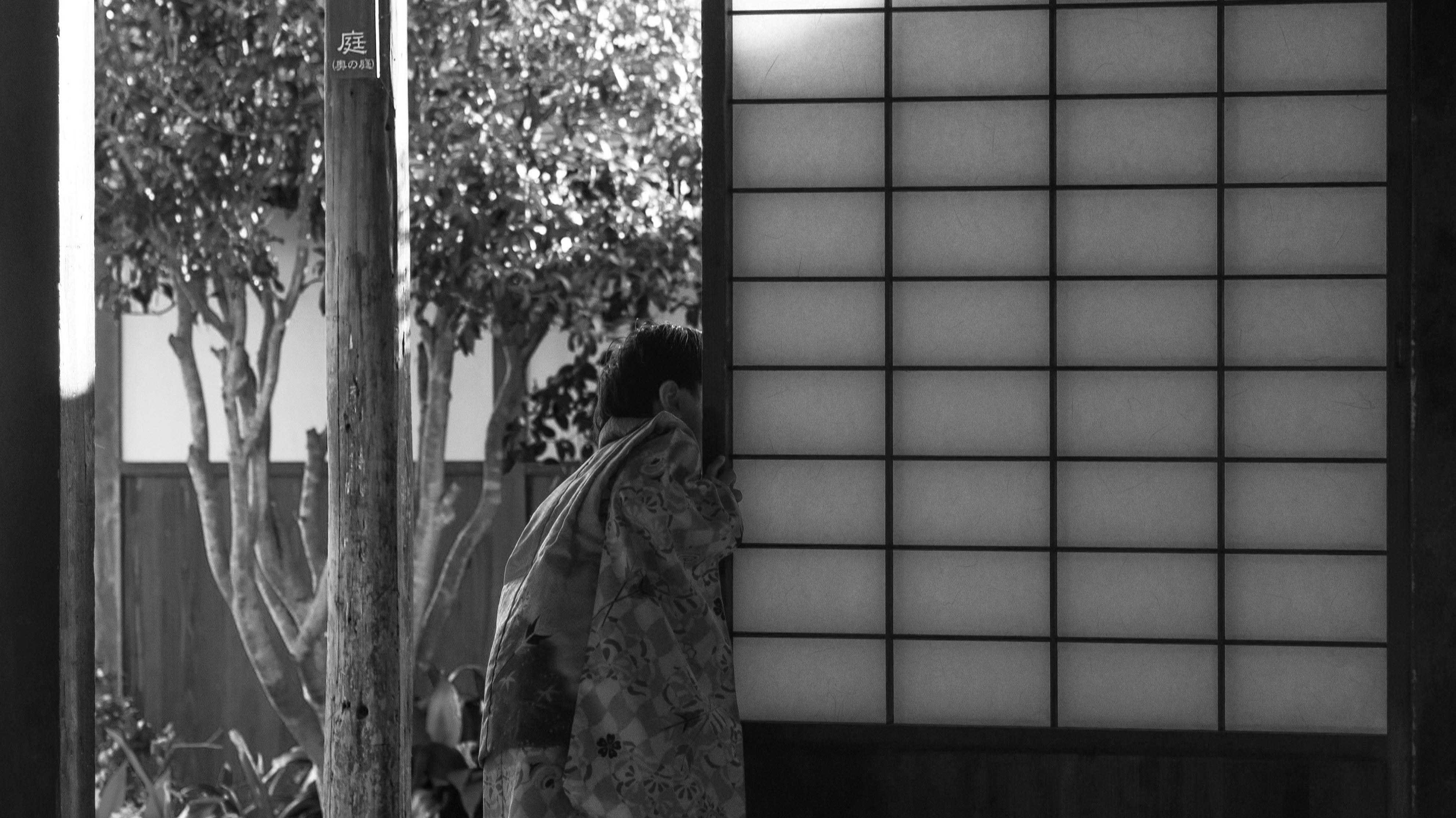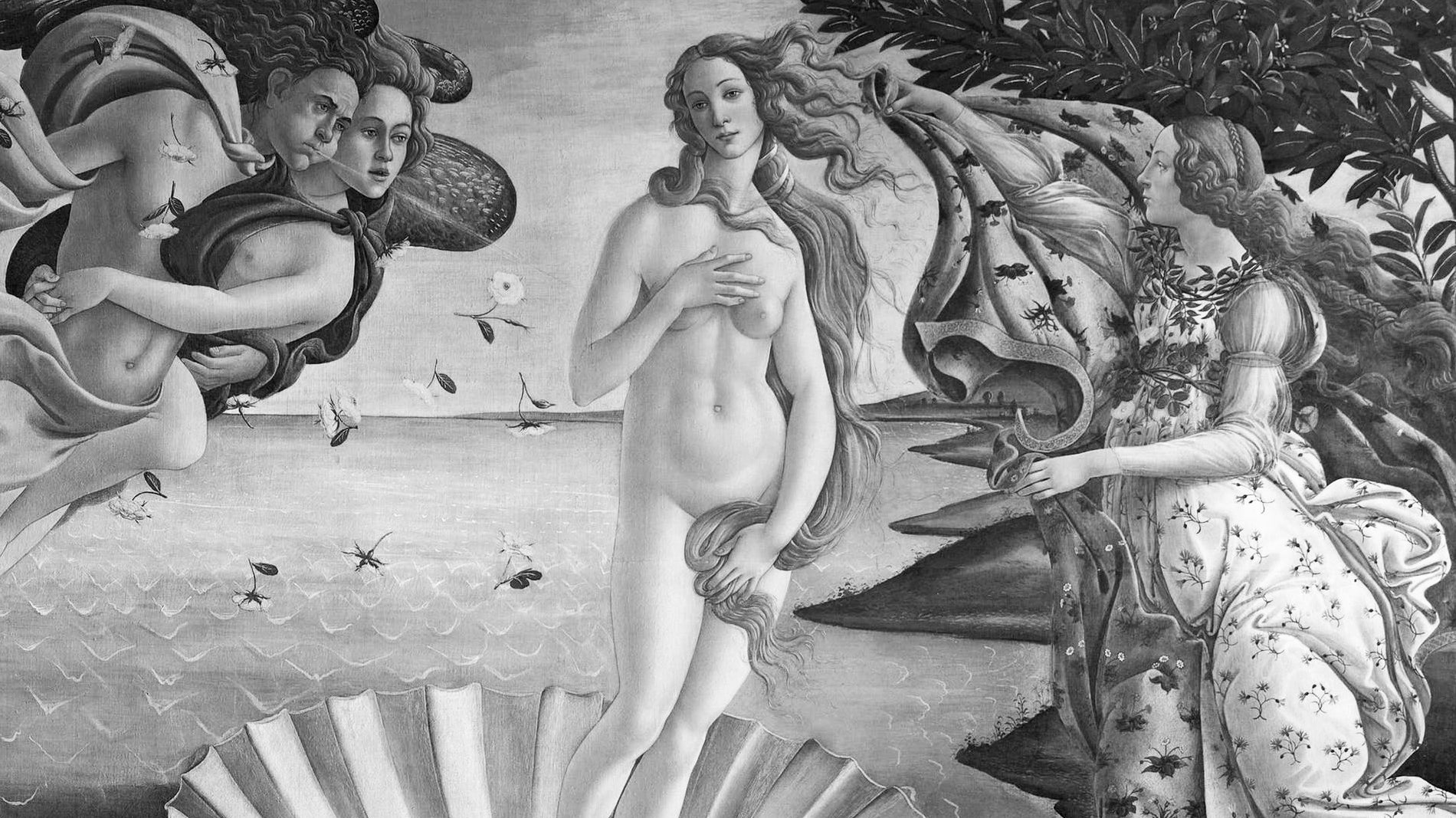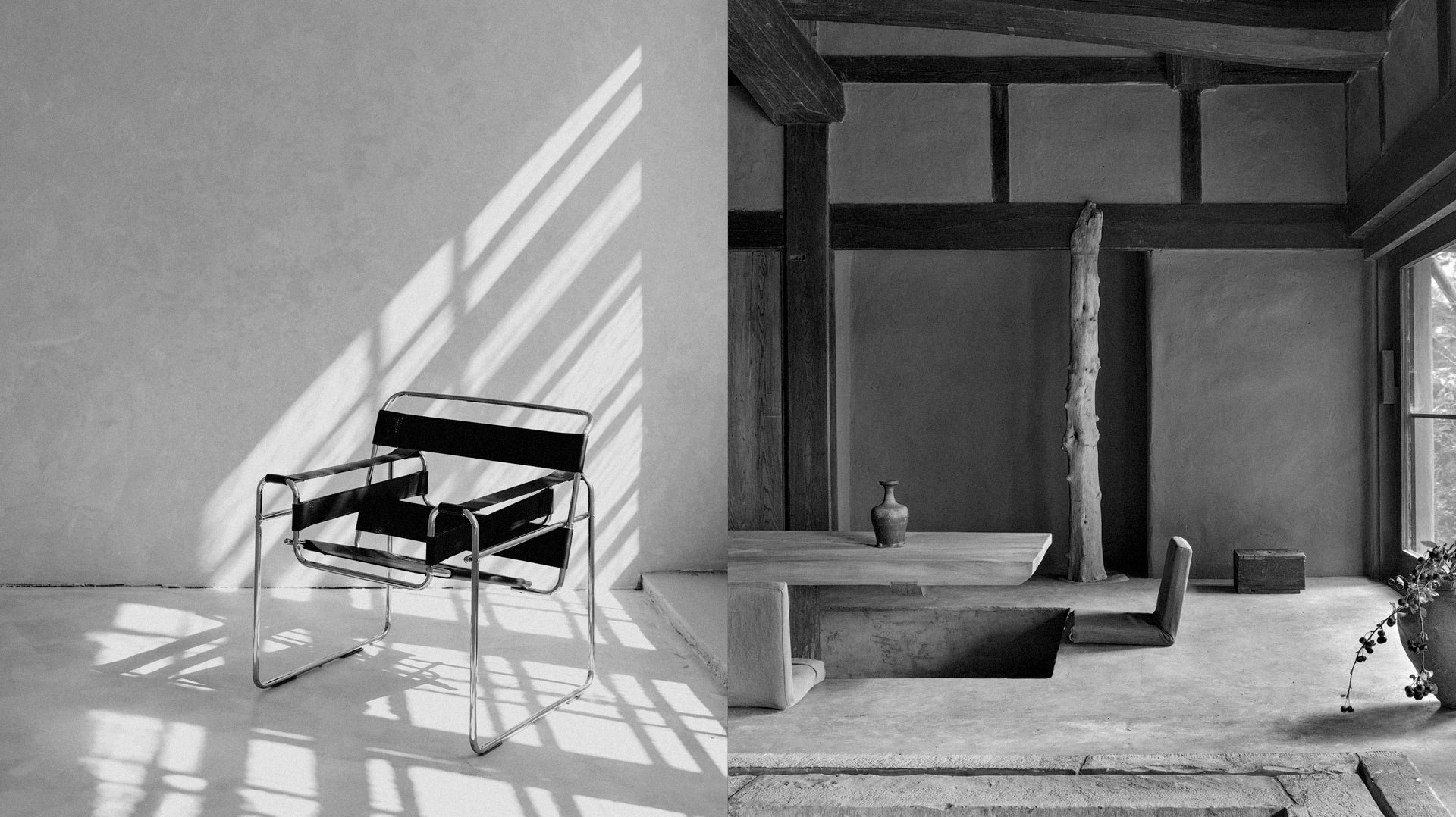Deconstruction is a theoretical concept that was coined by the French philosopher Jacques Derrida. Derrida insisted that a work has multiple meanings, often contradictory. However, this groundbreaking idea did not confine itself to literature and philosophy; it also inspired architectural thought, giving rise to the deconstructivist movement. By the end of the 1980s, Deconstructivism in architecture had evolved beyond being merely a design philosophy – it had become a revolutionary approach that transcended traditional aesthetic limits.
(Deconstructivism: From Philosophy to Contemporary Architecture - dans le gris)

The Museum of Military History extension was designed by Daniel Libeskind. Photo Credit: Dezeen.
(Deconstructivism: From Philosophy to Contemporary Architecture - dans le gris)
What is Deconstructivism?
Deconstructivism is a postmodern architectural movement that emerged in the 1980s but truly began to flourish in the 1990s. This architectural approach draws inspiration from the philosophy of deconstruction, famously advanced by French thinker Jacques Derrida. Just as Derrida argued that texts can hold multiple, sometimes conflicting meanings, Deconstructivist architects assert that buildings can also convey a multitude of interpretations.
At its core, Deconstructivism aims to break down established architectural conventions. It gives the impression of fragmented forms, often characterized by distorted shapes and a deliberate departure from symmetry, rejecting traditional notions of obvious harmony, continuity, or symmetry. Deconstructivism embraces the idea of dismantling conventional architectural elements, introducing ambiguity in both form and function. By doing so, Deconstructivism challenges viewers to reconsider their preconceived notions of space and structure.
Deconstructivist architecture tends to appear visually dynamic, featuring a sense of unpredictability and controlled chaos. Essentially, this movement applies Derrida's deconstructive principles to the physical world of architecture, encouraging observers to continually reinterpret and reassess the built environment. The famous architects who practiced deconstructivism in architecture include Zaha Hadid, Frank Gehry, Rem Koolhaas, and Daniel Libeskind.
(Deconstructivism: From Philosophy to Contemporary Architecture - dans le gris)
(Deconstructivism: From Philosophy to Contemporary Architecture - dans le gris)
The Origins and Emergence of Deconstructivism in Architecture
Deconstructivism emerged as a reaction against the principles and aesthetic norms of modernism that dominated architecture in the early to mid-20th century. It represents the release of infinite possibilities for playing around with forms and volumes, and it came to public notice with the 1982 Parc de la Villette architectural design competition. Numerous architects from around the world participated in the competition, such as Bernard Tschumi, Jacques Derrida, and Peter Eisenman. The Parc de la Villette competition is considered a pivotal moment in the history of Deconstructivism. It brought the movement to the forefront of architectural discourse and demonstrated its viability in a practical and public project.
(Deconstructivism: From Philosophy to Contemporary Architecture - dans le gris) 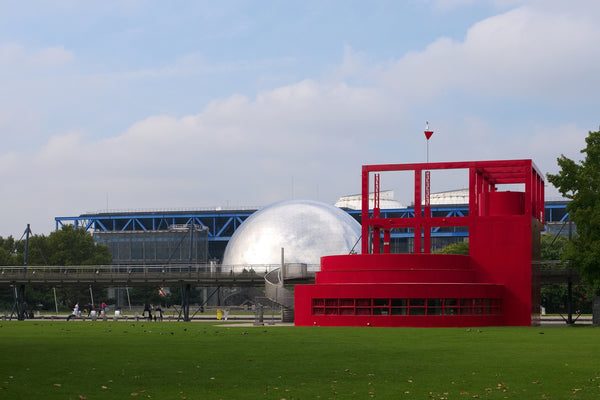
Bernard Tschumi's Parc de la Villette was hailed as the first built manifestation of the deconstructivist theories of philosopher Jacques Derrida.
The style gained more attention in 1988 when the Museum of Modern Art hosted an exhibition titled "Deconstructivist Architecture," organized by Philip Johnson and Mark Wigley. The exhibition showcased the works of several architects associated with the Deconstructivist movement, including Frank Gehry, Zaha Hadid, Rem Koolhaas, Peter Eisenman, Daniel Libeskind, and Bernard Tschumi, among others. It aimed to explore the emerging architectural trend and focused on the idea of deconstruction, drawing parallels with Jacques Derrida's philosophical concept of questioning established norms and seeking multiple interpretations. Before this exhibition, Deconstructivism was not considered an established movement or style. However, through this exhibition, the similarities in the architects' approach to design coalesced into a recognizable style.
(Deconstructivism: From Philosophy to Contemporary Architecture - dans le gris) 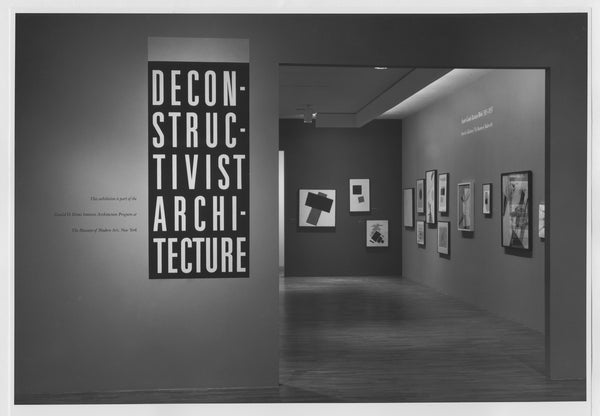
Installation view of the exhibition "Deconstructivist Architecture" at The Museum of Modern Art, New York. Photograph by Mali Olatunji.
(Deconstructivism: From Philosophy to Contemporary Architecture - dans le gris)
The Key Characteristics of Deconstructivism
Unlike Modernism, Deconstructivism rejected principles such as functionalism, simplicity, and an emphasis on geometric forms. Deconstructivism embraced complexity, fragmentation, and unpredictability. Architects associated with the movement sought to break the notion that architectural forms should conform to a singular, easily comprehensible structure. Below, let's explore the key characteristics of Deconstructivism.
(Deconstructivism: From Philosophy to Contemporary Architecture - dans le gris)
01. Fragmented and Disjointed Forms
Deconstructivism in architecture mostly features fragmented and disjointed forms. In the context of Deconstructivism, fragmentation refers to the intentional breaking down or disintegration of conventional architectural elements, rejecting the notion of a cohesive and unified structure. Additionally, fragmentation manifests in the physical appearance of buildings, which may exhibit disjointed or fractured forms. Therefore, for some people, they might perceive Deconstructivism as a form of rebellion due to its deviation from expectations.
(Deconstructivism: From Philosophy to Contemporary Architecture - dans le gris)
02. Asymmetry
Modernism favored simplicity and clarity of form, but Deconstructivism embraces complexity, asymmetry, and deliberately departs from balance and proportions. This not only increases the unpredictable nature of deconstructivist architecture but also encourages exploring a building from multiple viewpoints. Observers encounter varied angles and perspectives, reinforcing the concept that there is no fixed or singular approach to interpreting the architectural form.
(Deconstructivism: From Philosophy to Contemporary Architecture - dans le gris)
03. Dynamism and Unpredictability
Deconstructivism in architecture draws inspiration not only from philosophy but also from various art movements, especially Constructivism. The formal experimentation and asymmetrical geometry of Constructivism have significantly influenced some deconstructivist architects, leading to an intentional departure from traditional, predictable shapes in Deconstructivism. The deconstructivist movement actively challenges expectations, aiming to instill a sense of dynamism and unpredictability in architectural compositions.
(Deconstructivism: From Philosophy to Contemporary Architecture - dans le gris)
04. Spatial Complexity
Spatial complexity is a defining characteristic of Deconstructivism, setting it apart from traditional architectural styles. In deconstructivist designs, spatial complexity is achieved through the intentional manipulation of space, form, and structure. These deliberate disruptions challenge conventional spatial expectations and redefine the physical dimensions of architecture. For instance, Frank Gehry's design for the Vitra Design Museum stands as a programmatic work of Deconstructivism—a collage of towers, ramps, and cubes. It is characterized by dynamic, angular forms and fragmented structures, where spatial complexity is evident as the building's volumes seem to fold and unfold, creating unexpected intersections and voids.
(Deconstructivism: From Philosophy to Contemporary Architecture - dans le gris)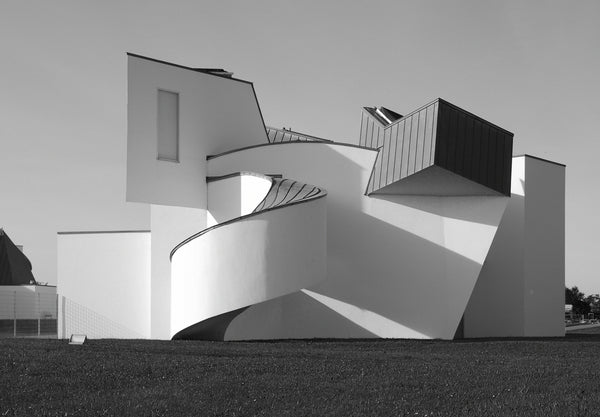
Frank Gehry's design for the Vitra Design Museum exemplifies Deconstructivism. Photo Credit: Vitra.
(Deconstructivism: From Philosophy to Contemporary Architecture - dans le gris)
05. Creative and Varied Material Usage
When architects engage in Deconstructivism, they frequently utilize industrial materials such as steel, glass, concrete, and exposed metal. Although these materials are often associated with the construction industry, they are employed in unconventional ways. Moreover, Deconstructivism in architecture may incorporate non-traditional cladding materials, deviating from the conventional use of bricks or uniform facades. For instance, architects might experiment with materials like corrugated metal, perforated panels, or composite materials to create textured and visually dynamic exteriors. This approach to materials in Deconstructivism encourages architects to explore the expressive potential of materials, fostering a dynamic dialogue between form, function, and the visual impact of the built environment.
(Deconstructivism: From Philosophy to Contemporary Architecture - dans le gris)
Prominent Architects in Deconstructivism
(Deconstructivism: From Philosophy to Contemporary Architecture - dans le gris)
Frank Gehry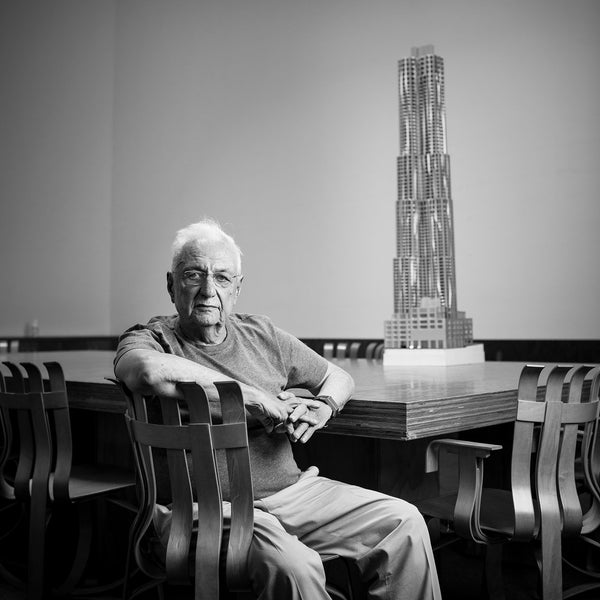
Frank Gehry has always been associated with Deconstructivism. Photo Credit: Gagosian by David Lauridsen.
Frank Gehry is a Canadian-born American architect and designer, considered one of the most influential architects of the late 20th century. He has become renowned for his use of unconventional materials and deconstructive forms. Gehry used to say, "I was looking for a way to express movement." His architectural language features complex curvilinear forms. His use of materials such as titanium, stainless steel, and glass contributes to the distinctive aesthetic of his buildings, reflecting the technological advancements of the late 20th century.
(Deconstructivism: From Philosophy to Contemporary Architecture - dans le gris)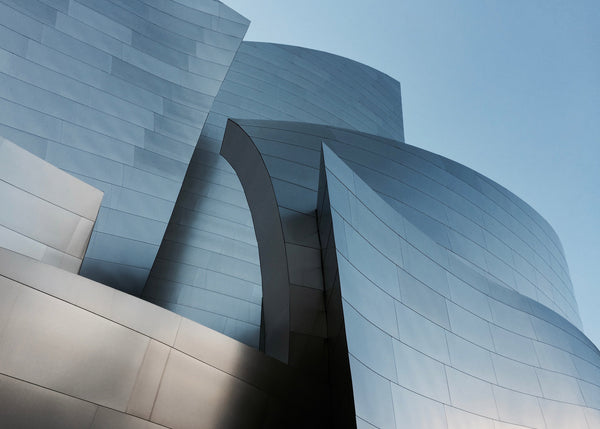
The Guggenheim Museum Bilbao, designed by Frank Gehry, is considered an exemplary representation of Deconstructivism. Photograph by Tobias Keller.
(Deconstructivism: From Philosophy to Contemporary Architecture - dans le gris)
One of Frank Gehry's most remarkable designs, the Guggenheim Museum Bilbao in Spain, is considered an exemplary representation of Deconstructivism. It comprises interconnected structures, with an exceptional free-form, titanium-clad mass that evokes the impression of a colossal piece of abstract sculpture. The museum is characterized by its organic and fluid shapes, featuring undulating curves and fragmented forms. It not only changed the way architects and people think about museums but also boosted Bilbao's economy with its astounding success.
(Deconstructivism: From Philosophy to Contemporary Architecture - dans le gris)
Zaha Hadid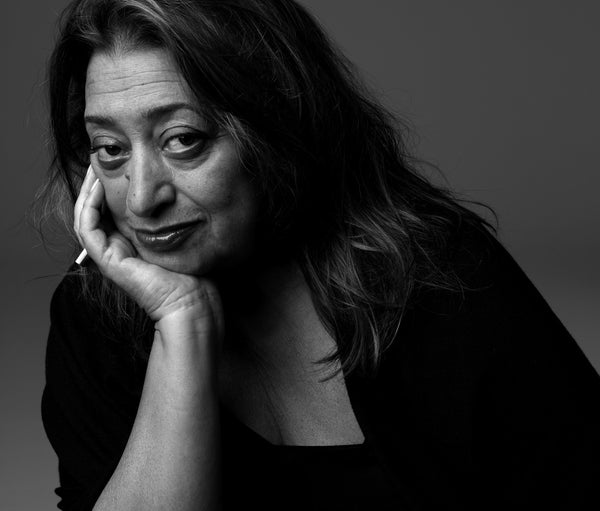
Zaha Hadid, the Iraqi-born British architect, was chosen as one of seven architects to participate in the exhibition "Deconstructivism in Architecture." Portrait by Jason Schmidt Studio for New York Magazine.
Zaha Hadid, a British architect born in Iraq, gained international acclaim for her radical deconstructivist designs. Renowned for her dynamic, curving forms and powerful, elongated structures, she achieved a groundbreaking milestone in 2004 by becoming the first woman to be honored with the prestigious Pritzker Architecture Prize.
(Deconstructivism: From Philosophy to Contemporary Architecture - dans le gris)
Phaeno Science Center, Wolfsburg. Image @ Werner Huthmacher, Courtesy of Zaha Hadid Architects.
(Deconstructivism: From Philosophy to Contemporary Architecture - dans le gris)
One notable example of Zaha Hadid's work is the Phaeno Science Center, often described as an "architectural adventure playground" and a "magic box." The Phaeno Science Centre creates dynamic and complex spaces. It showcases a series of bold and expressive forms, characterized by sweeping curves, tilted planes, and intersecting volumes. The irregular geometry of the structure contributes to a sense of fluidity and movement, aligning with the principles of Deconstructivism.
(Deconstructivism: From Philosophy to Contemporary Architecture - dans le gris)
• Further Reading: Zaha Hadid's Architectural Designs of Mathematical Beauty
(Deconstructivism: From Philosophy to Contemporary Architecture - dans le gris)
Rem Koolhaas
Dutch architect Rem Koolhaas. Photo Credit: The Architectural Review
Rem Koolhaas, a Dutch architect, urbanist, and professor, has made significant contributions to contemporary architecture and urban design. It's crucial to recognize the evolution of his design philosophy over time. While Koolhaas is generally not labeled as a deconstructivist architect, his work contains elements that echo the principles of Deconstructivism. Unlike other architects associated with Deconstructivism, Koolhaas's work doesn't heavily rely on theory. Instead, it is infused with a sense of humanity and a genuine concern for the role that architecture plays in everyday life, particularly within urban contexts. Koolhaas's theoretical writings, combined with his penchant for asymmetry, daring spatial explorations, and unconventional use of color, have led some to characterize him as a deconstructivist.
(Deconstructivism: From Philosophy to Contemporary Architecture - dans le gris)
The Seattle Central Library, designed by Rem Koolhaas's architectural firm OMA, features elements that align with what we commonly associate with Deconstructivism. Photo Credit: Archdaily.
(Deconstructivism: From Philosophy to Contemporary Architecture - dans le gris)
The Seattle Central Library, designed by Rem Koolhaas's architectural firm OMA (Office for Metropolitan Architecture), is often considered an example of deconstructivist architecture. Completed in 2004, it challenges traditional notions of symmetry through the incorporation of unconventional angles, transparent materials, and an emphasis on spatial complexity. These features align with what we commonly associate with Deconstructivism.
(Deconstructivism: From Philosophy to Contemporary Architecture - dans le gris)
Daniel Libeskind
Daniel Libeskind is a prominent advocate of Deconstructivism. Photo Credit: Wilde + Spieth.
Daniel Libeskind, a Polish-American architect, is renowned for infusing complex ideas and emotions into his designs. He gained recognition as one of the world's foremost deconstructivist architects through his participation in the Museum of Modern Art's "Deconstructivist Architecture" exhibition in New York.
(Deconstructivism: From Philosophy to Contemporary Architecture - dans le gris)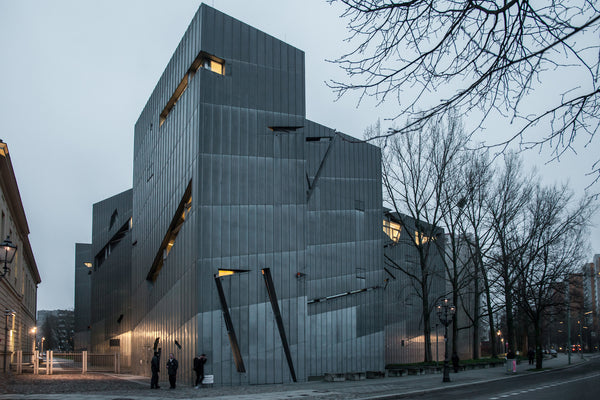
The architectural design of the Jewish Museum serves as an illustration of Deconstructivism. Photograph by Denis Esakov.
(Deconstructivism: From Philosophy to Contemporary Architecture - dans le gris)
The Jewish Museum in Berlin is an example of Daniel Libeskind's work that incorporates deconstructivist elements. He intentionally introduced a disorienting and asymmetrical structure to evoke a sense of disruption and loss, reflecting the tumultuous history of Jews in Germany. For Daniel Libeskind, this project represents his intent to create a building that tells a story, not just an abstract set of walls and windows.
(Deconstructivism: From Philosophy to Contemporary Architecture - dans le gris)
Read More Architecture Articles:
• Zaha Hadid's Architectural Designs of Mathematical Beauty
• Postmodern Architecture: Definition, Characteristics and Examples
• Tadao Ando: Minimalism and Light in Concrete Architecture
• Brutalist Architecture: Origins, Characteristics, and Examples
(Zaha Hadid's Architectural Designs of Mathematical Beauty - dans le gris)
About Us
Dans Le Gris is a brand that began with everyday jewelry, with each handmade piece designed and crafted in Taiwan. We deeply value every detail, dedicating ourselves to creating timeless pieces through collaboration with experienced craftsmen.
In our journal, we provide irregular updates featuring articles about art, culture, and design. Our curated content encompasses diverse aspects of life, with the aspiration to offer meaningful insights and inspiration.
